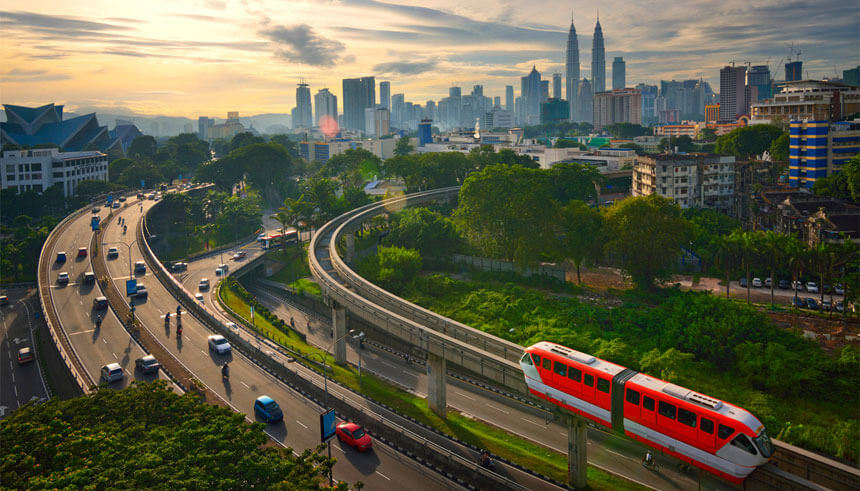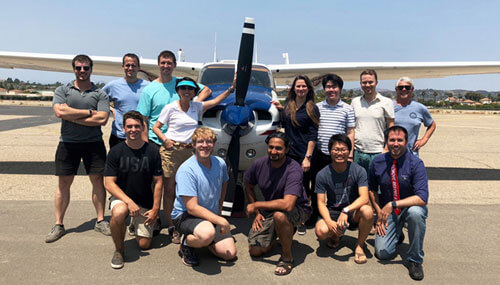U.S.-Asia Business
Electric Planes, Trains and Autos: Cross-Border Smart Mobility Opportunities
By

Identifying business opportunities in the US and China’s push toward a green revolution.
China has been on a smart city boom over the past few years, and with that comes increased interest in smart mobility innovations. By 2025, China is expected to account for 50 percent of the smart cities in Asia, with the total smart city market expected to be worth $2 trillion by then. Global spending on smart city development is forecasted to top $81 billion this year and to reach $158 billion by 2022, with the United States and China as the top two leaders. In 2018 alone, China has invested about $195 billion in transportation infrastructure, all with the goal of having a system that is “safe, efficient and green” by 2020.
A major aspect of smart cities is the development of “smart mobility,” a concept that integrates technology with transportation to provide more efficient and environmentally cleaner modes of travel. Smart mobility includes electric and autonomous vehicles, car-sharing and ridesharing, integrated and updated traffic systems, more efficient public transit, and even electric airplanes. Some of the largest and most common issues plaguing big cities are traffic, pollution, and inefficient usage of energy. Smart mobility helps solve these issues, and China—which is the world’s largest automobile market, has a rapidly urbanizing population, and has a notable pollution problem—is keen to invest in these areas.
The benefits of smart mobility
Almost anyone living in an urban area has complained about traffic conditions. As countries develop, urbanization occurs, and people migrate from rural areas to cities where there are more employment opportunities. This mass migration can cause serious congestion issues on both roads and in public transportation. For established cities like Los Angeles, that are neither built to handle such a mass of vehicles, nor have adequate public transit infrastructure in place, adopting smart mobility strategies can provide relief.
Rudy Salo, a partner at law firm Nixon Peabody who specializes in transportation finance, says that traffic is the “number one issue” plaguing cities. In China, that issue is especially prevalent; according to the South China Morning Post, China has 10 of the top 25 most congested cities in the world. “Traffic is just hands-down one of the biggest wastes of energy on earth,” he says. “I literally mean gas, electricity, physical energy, mental energy.”
According to Deloitte, the average American spends 34 hours per year sitting in traffic. Translated into opportunity cost, that’s $330 million lost per day for all commuters combined. Deceptively simple solutions like rideshare or higher-tech ideas like autonomous vehicles can not only drastically reduce congestion (and, by proxy, pollution), but also give people more productive, higher quality lives. Instead of spending two hours sitting in a car in bumper-to-bumper traffic, people can dedicate that time to work or personal interests, Salo says.
China is in the unique position to leapfrog directly into electric airplanes without the cumbersome worry of old infrastructure.

Smart mobility solutions and cross-border opportunities
The future of smart mobility is electric—and not just for automobiles. Ampaire, an electric airplane startup, is looking up rather than down when it comes to opportunities in the smart mobility space. Susan Ying, Ampaire’s vice president of technology strategy and international relations, says that electrifying airplanes could vastly improve air quality and pollution. According to Ying, current airplane combustion engines lose 70-80 percent of their efficiency along the way, but with battery-powered planes, planes can have efficiencies of “up to 98 percent.” In the long-run, Ampaire hopes to develop a supersonic all-electric airplane, but currently they are testing a hybrid electric-combustion airplane.
“This way, you would clean up the air because there’s no pollution [from the planes],” Ying says. “Global aerospace dumps 800 million tons of carbon dioxide into the atmosphere per year—that is huge.”
Ampaire sees China as a big market opportunity for their electric planes. China has invested heavily in its electric car market and is now the largest electric car market in the world—becoming the largest electric airplane market doesn’t sound too far off. Although China’s airspace is still largely controlled by the military, Ying says that it is slowly opening up to become more commercial. And because that space is unused and has no legacy, China is in the unique position to leapfrog directly into electric airplanes without the cumbersome worry of old infrastructure.
However, a less lofty solution to electrified aerospace is figuring out how to solve the problem of “first mile” and “last mile.” Salo says that one of the major complaints of people living in Los Angeles is that they live several miles away from the nearest train station—not far, but far enough where it is still necessary to drive. “Once they get in the car, they aren’t going to drive to the station—they’re going to drive directly to work,” he says, which means that they just keep adding to city congestion and pollution. Once a company figures out a go-to solution for the “first-mile, last-mile” problem (current ideas range from shared scooters, to building autonomous shuttles), people will be much more incentivized—and that company that achieves it will make a fortune, Salo adds.
Challenges to implementing smart mobility
The main roadblock to broadly implemented smart mobility solutions is standardization. Each country has different laws and regulations, and, within the United States, laws and regulations can vary from state to state, and even city to city.
“You have some cities trying out autonomous vehicles and pilots, and other cities don’t have those pilot systems because they’re afraid,” explains Salo. He adds that even for domestic electric vehicles, the lack of standardization has prevented broader acceptance. “The reason why we don’t see electric vehicle charging stations all over the place is because all the connections for all these cars are different,” he says. “How is that going to work? How are we going to charge all those branded cars unless the law makes it a uniform charger connection?”

Once a company figures out a go-to solution for the “first-mile, last-mile” problem, people will be much more incentivized—and that company who achieves it will make a fortune.
Ampaire also sees standardization as a challenge but is in the process of forming an electric aviation industry to come up with an international standard for charging. “Airplanes aren’t staying in one place,” Ying points out. “Today you’re in LA, tomorrow you’re in Tokyo—you can’t carry all those different adaptors—and, by the way, these adaptors would be pretty huge because you’re charging an airplane.”
Both Salo and Ying believe that China is uniquely suited to implementing smart mobility solutions, in the air and on the ground. Unlike in the United States, which has a “patchwork” of regulations, China can jump right into building smart mobility-friendly infrastructure and integrating policies that encourage usage and adoption because of its top-down government. “China is in a really advantageous position,” believes Ying. “China, through President Xi, is pushing on this—but I think the people also want to push this, too.”
The differences also go down to the cultural level. China, Salo adds, also lacks the historical ties to personal vehicles, unlike the United States. “The personal vehicle is as much a part of America as apple pie and guns rights,” he says. “Go to China, there’s not this historical dependence upon a vehicle—I think the mentality and the culture is shared vehicles, so autonomous vehicles are probably going to be much easier in China than the United States.”
However, Salo believes that all the U.S. needs is better communication between businesses, people, and the government to get the smart mobility movement rolling. “We need to have more discussion,” he emphasizes, pointing to forums like LA CoMotion as great ways for all parties to brainstorm and work together. “Governments talking to the businesses, lawyers talking to the government and businesses, and the businesses all talking to each other. We all need to talk about things that need to change on an extremely granular level.”

